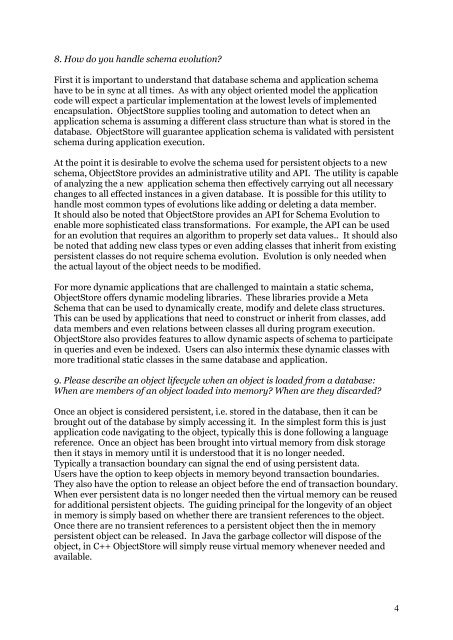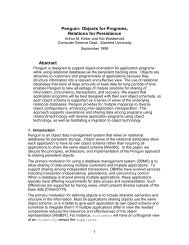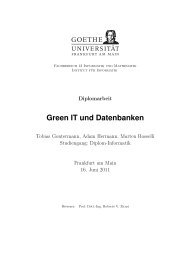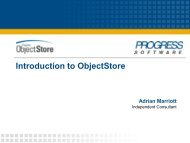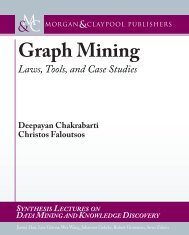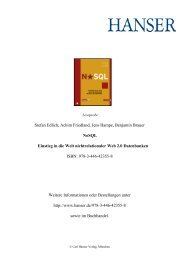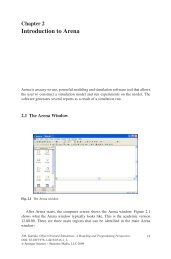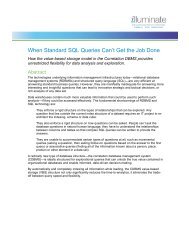TechView Product Report: ObjectStore - ODBMS
TechView Product Report: ObjectStore - ODBMS
TechView Product Report: ObjectStore - ODBMS
Create successful ePaper yourself
Turn your PDF publications into a flip-book with our unique Google optimized e-Paper software.
8. How do you handle schema evolution?<br />
First it is important to understand that database schema and application schema<br />
have to be in sync at all times. As with any object oriented model the application<br />
code will expect a particular implementation at the lowest levels of implemented<br />
encapsulation. <strong>ObjectStore</strong> supplies tooling and automation to detect when an<br />
application schema is assuming a different class structure than what is stored in the<br />
database. <strong>ObjectStore</strong> will guarantee application schema is validated with persistent<br />
schema during application execution.<br />
At the point it is desirable to evolve the schema used for persistent objects to a new<br />
schema, <strong>ObjectStore</strong> provides an administrative utility and API. The utility is capable<br />
of analyzing the a new application schema then effectively carrying out all necessary<br />
changes to all effected instances in a given database. It is possible for this utility to<br />
handle most common types of evolutions like adding or deleting a data member.<br />
It should also be noted that <strong>ObjectStore</strong> provides an API for Schema Evolution to<br />
enable more sophisticated class transformations. For example, the API can be used<br />
for an evolution that requires an algorithm to properly set data values.. It should also<br />
be noted that adding new class types or even adding classes that inherit from existing<br />
persistent classes do not require schema evolution. Evolution is only needed when<br />
the actual layout of the object needs to be modified.<br />
For more dynamic applications that are challenged to maintain a static schema,<br />
<strong>ObjectStore</strong> offers dynamic modeling libraries. These libraries provide a Meta<br />
Schema that can be used to dynamically create, modify and delete class structures.<br />
This can be used by applications that need to construct or inherit from classes, add<br />
data members and even relations between classes all during program execution.<br />
<strong>ObjectStore</strong> also provides features to allow dynamic aspects of schema to participate<br />
in queries and even be indexed. Users can also intermix these dynamic classes with<br />
more traditional static classes in the same database and application.<br />
9. Please describe an object lifecycle when an object is loaded from a database:<br />
When are members of an object loaded into memory? When are they discarded?<br />
Once an object is considered persistent, i.e. stored in the database, then it can be<br />
brought out of the database by simply accessing it. In the simplest form this is just<br />
application code navigating to the object, typically this is done following a language<br />
reference. Once an object has been brought into virtual memory from disk storage<br />
then it stays in memory until it is understood that it is no longer needed.<br />
Typically a transaction boundary can signal the end of using persistent data.<br />
Users have the option to keep objects in memory beyond transaction boundaries.<br />
They also have the option to release an object before the end of transaction boundary.<br />
When ever persistent data is no longer needed then the virtual memory can be reused<br />
for additional persistent objects. The guiding principal for the longevity of an object<br />
in memory is simply based on whether there are transient references to the object.<br />
Once there are no transient references to a persistent object then the in memory<br />
persistent object can be released. In Java the garbage collector will dispose of the<br />
object, in C++ <strong>ObjectStore</strong> will simply reuse virtual memory whenever needed and<br />
available.<br />
4


